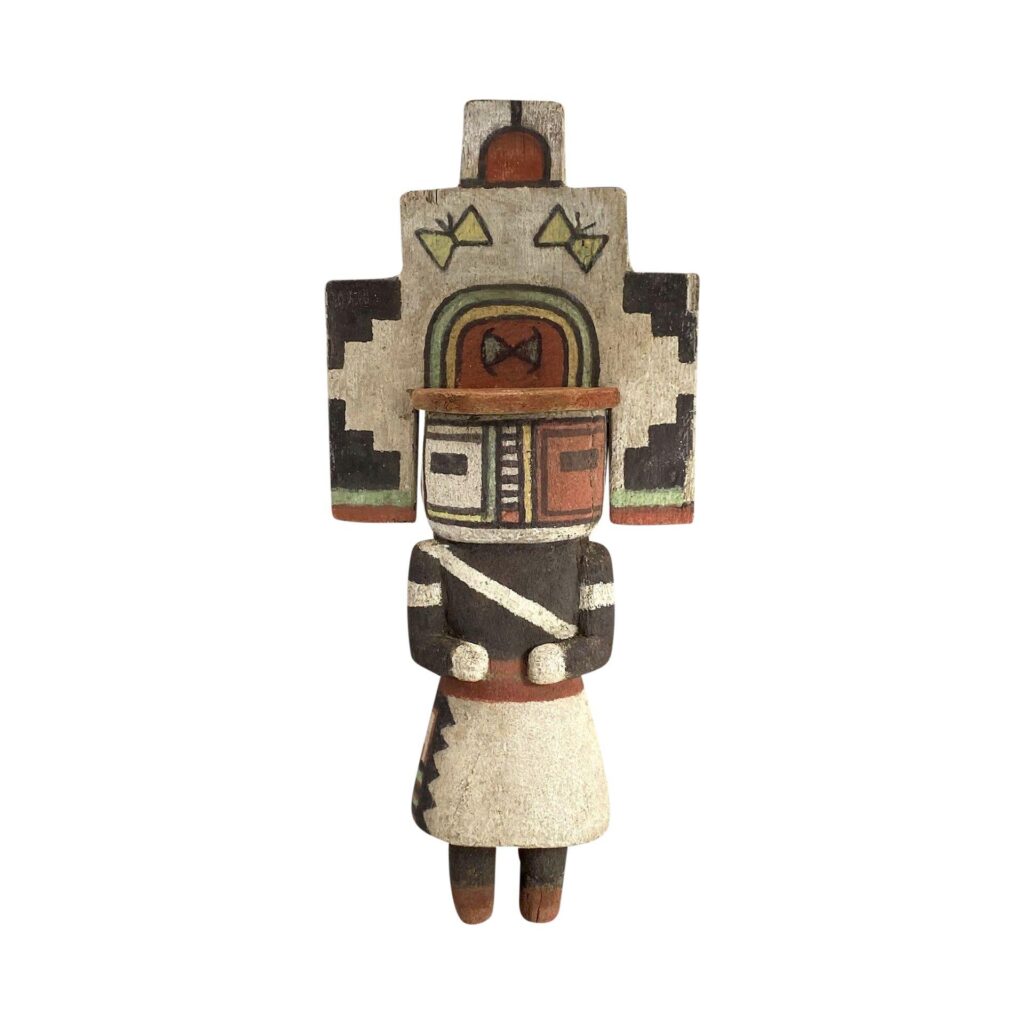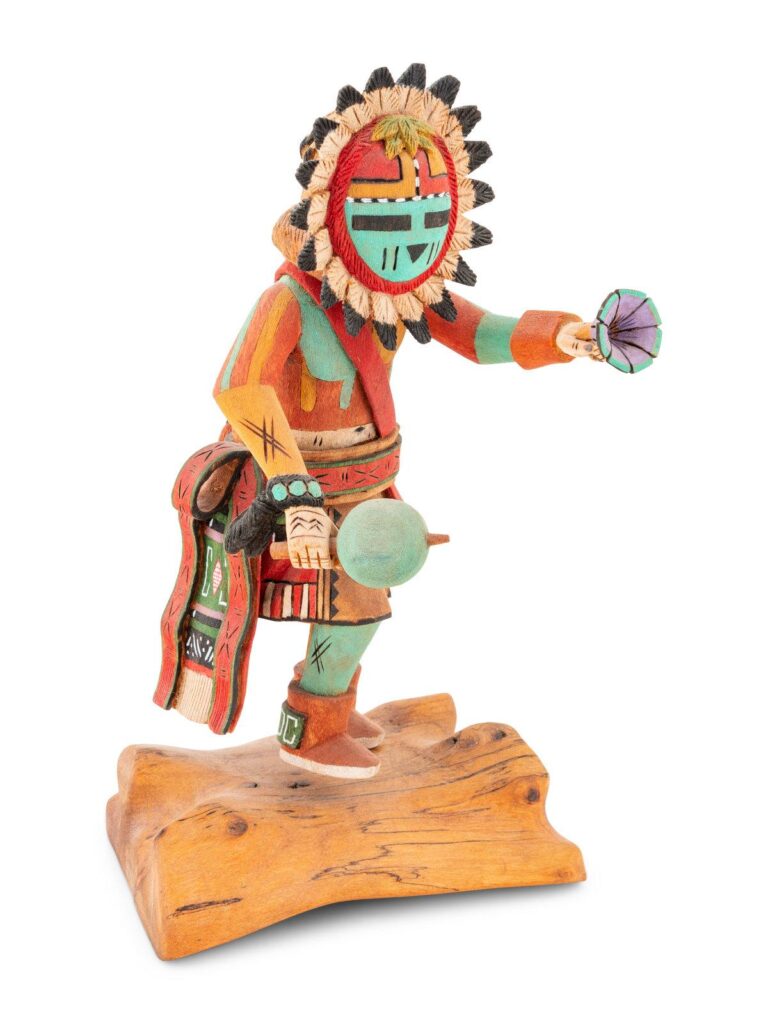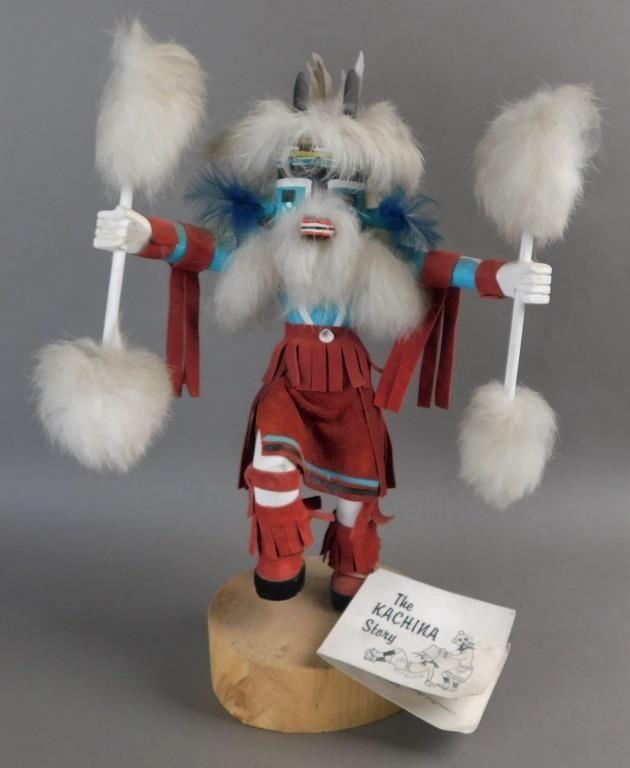BLOG
Finds and Interests
Much more than playful dolls, kachina dolls are collectible heirlooms of a complex belief system. The kachina doll tradition originated from Native Americans, most prolifically the Hopi people, and the dolls embody many spiritual legends and deities from their culture. Often intended to teach young children about the spiritual beings who helped their people, these dolls were not typically used for play but for instructional purposes. Although they won’t come to life in your display cabinet, the Hopi people believe that these dolls act as a bridge between the spiritual world and the physical world.

Image Source: WorthPoint
The History of the Kachina
Although the Hopi people have made kachina dolls (also called katsina) for centuries, traders first came across the examples we’re familiar with today in the 1850s. These dolls can be identified by the singular piece of cottonwood root used to carve the bodies. The facial features were made from other materials and attached to the face with glue. The dolls’ texture is rough, and their creators used mineral and vegetable pigments to paint their coloring.
Because of increasing tourist interest by the early 20th century, crafters began designing kachina dolls to appear closer to the human form. These are the versions most imitated and sold on the market. These forms gradually had more distinct limbs, such as the versions sellers refer to as the “belly ache” or “belly warmer” kachina dolls with their hands placed over their stomachs. Check out this example of a kachina with the “belly warmer” arms, which was sold for $415.79 on eBay in 2023.
Going into the mid-1900s, kachina dolls had more articulated features and limbs—which today’s tourists and historians outside the culture describe as “action” figures or dolls—and accompanying accessories. Instead of bodies carved from a single piece of wood and painted-on clothing, the dolls had limbs attached to their torsos and were dressed in fabric resembling clothes. Because these fabrics age, deteriorate, and oxidate with time, they can provide clues as to the age of a kachina doll. For example, cotton in a kachina doll’s headpiece would turn yellow over time.
The tribes who made kachina dolls often reserved their more traditional forms for their ceremonies and spiritual practices and sold the modern iterations to tourists. Thus, kachina dolls from the mid-1900s to now have the most variations in shape, format, and unique features as their crafters have created an income from producing them.

Image Source: WorthPoint
Different Forms of Kachina Dolls
The Pueblo tribes who make kachina figures use them to embody one of the five hundred spirits and deities important to their culture. Each kachina has a name, personality, and purpose that represents something in the natural world or connects to the spiritual realm, often identifiable by their coloring or wear. There are also different forms of kachina dolls, but most people are familiar with the tithu figure, the full-body figure given to young girls at Hopi ceremonies. On the other hand, infants and toddlers generally received flat-body versions.
Many collectors focus on the kachina representing specific spirits, such as Crow Mother (called Tumas or Angwusnasomtaka), who is the mother of all spirits and guardian of Hopi children. This modern iteration of Crow Mother was sold for $2,999 on eBay in 2020, but pricing can range anywhere from the hundreds to low fifteen-hundreds. Another popular kachina is the sun or Tawa kachina, which typically has a male appearance with a turquoise blue face surrounded by rays of plant fibers or feathers. In 2020, this large sun kachina doll was sold for $1,625 on eBay.
Kachina Doll Variations

Image Source: WorthPoint
The Hopi were the most prolific producers of kachina dolls, but other Pueblo tribes in New Mexico, including the Zuni and Acoma, also made them. The Navajo people have also made kachina dolls, but these have no spiritual significance in the Navajo culture. Instead, the Navajo machine-work kachina dolls as a source of income. These versions appear colorful and detailed like the Hopi figures—they often feature fur and feathers and depict dancers—but Navajo kachina dolls are often not made from cottonwood root and are less expensive.
Happy Hunting!
Kachina dolls are precious pieces of Native American art, and their contemporary iterations made for sale dominate the market. It is important to note that not all dolls are especially valuable. Some can cost tens of thousands, but most are sold for $100 or less. Don’t forget to look at the WorthPoint Price Guide or visit a qualified professional to have a potential item appraised.
To discover more about Hopi customs and kachina dolls, check out this WorthPoint article on “Keeping Hopi Traditions Alive.” Happy hunting!
Sarah Seippel is a freelance writer and finds much of her inspiration in her father’s unique collections. In her free time, she enjoys hunting down the best cup of coffee and pursuing for vintage deals.